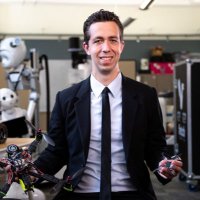
CORE Robotics Lab
@core_robotics
The Cognitive Optimization and Relational Robotics Lab at the Georgia Institute of Technology, focusing on research in all things robotics and optimal learning.
ID: 1217115057634463744
14-01-2020 16:04:08
176 Tweet
511 Followers
23 Following

We are hiring tenure-track faculty in Robotics, HRI, AI/ML, and Graphics at Georgia Tech School of Interactive Computing! I am grateful for the collaborative, supportive ecosystem of amazing faculty and students in Georgia Tech School of Interactive Computing and strongly encourage you to apply to join us! ic.gatech.edu/faculty-hiring



Machine Learning at Georgia Tech Georgia Tech Computing Robotics@GT Interested in how else diffusion models can be leveraged for robot model learning? Check out more papers by Sean Ye et al. from CORE Robotics Lab. Check them out: arxiv.org/abs/2409.15528 arxiv.org/pdf/2403.10794 ieeexplore.ieee.org/stampPDF/getPD…

“Trust and Dependence on Robotic Decision Support” has been published in IEEE Transactions on Robotics (T-RO)! Available here: ieeexplore.ieee.org/document/10726… Bravo to Manisha Natarajan on her strong experimental work to inform how we design for appropriate trust in robotic systems. CORE Robotics Lab





In future work, the CORE Robotics Lab will be developing adaptive robots that adjust to human stress levels and modulate workload to max performance in safety-critical settings. Here's an AAMAS'24 paper showing one way to modulate latent human variables: ifaamas.org/Proceedings/aa… 5/n


CORE Robotics Lab Congrats to Sam Yi Ting, Dr. Erin Botti, and Manisha Natarajan from the CORE Robotics Lab who are tremendous researchers and who helped me pursue this NASA Early Career Funded research. 6/6 Robotics@GT Georgia Tech Computing



Delighted to cap this year off holding Sean Ye and Pradyumna Tambwekar. Their legacy for the CORE Robotics Lab is immense, pioneering work on generative AI (diffusion models and LLMs). Your leadership will be missed. Zoox and Toyota Research Institute are lucky to have you! To check…







